Independent advisor discusses consumer perceptions of aquaculture and making sense of certification schemes
Editor’s note: Below is part two of a two-part interview with independent advisor Melanie Siggs, a former VP of SeaWeb. To read part 1, please click here.
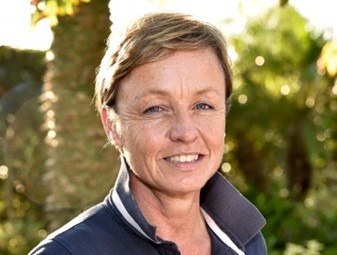 You gave the introduction address at the 2010 SeaWeb Seafood Summit in Paris, an event that was fairly contentious in tone between industry and the environmental community. Since then, how would you characterize the tone of today’s sustainability discussions and what has enabled the changes?
You gave the introduction address at the 2010 SeaWeb Seafood Summit in Paris, an event that was fairly contentious in tone between industry and the environmental community. Since then, how would you characterize the tone of today’s sustainability discussions and what has enabled the changes?
Looking at the bigger picture, I think everything is changing. This isn’t about seafood being unique or the way it approaches business or the dialogues. I think business generally has changed. And we see that by great leaders like Paul Polman and Unilever, who are right on the front line of creating change for better business; business that takes real responsibility for how it acts, negative and positive. That ripples all the way through. So whether you’re working in agriculture, in timber, in paper and pulp, in energy, water or in seafood, we are changing they way we do business and we’re recognizing that it’s important for the business and it makes good sense. I was at a Unilver-sponsored event on market transformation just recently where again and again we heard that no business can create market transformation alone, it has to be done in trusted, collaborative forums.
You’ve got one-one-partnerships and leadership businesses, but then you’ve also got collaboratives where people can come together as groups that have made a big difference. From the big collaboratives like Consumer Goods Forum to specialist seafood groups like the Conservation Alliance in North America and Sustainable Seafood Coalition in the UK.
Then you’ve got multi-stakeholder governance structures in organizations like GAA with the Standards Oversight Committee and the ASC with the Stakeholder Council. Perhaps importantly we’re now seeing the standards organizations themselves recognize that there are areas where they too need to collaborate in a pre-competitive space for the greater good.
We’ve been quite good at noticing where it’s useful to build out those broader dialogues. We’ve seen that happening in other sectors and mirror those — like the industry roundtables. We’re doing good, and yet we’re still very much on that journey and I think there’s the low-hanging fruit scenario, naturally — what has been easy for us to do — and now our challenge is how to keep that moving. How do we know what the leading edge is and still be brave enough to create the dialogues in that space? How do we make that space feel safe and appropriate for different cultures that we’re less familiar with to be able to act? How do we work out what we need to do now, come together around now, to create the industry we need for another decade?
How do we break out of our North American or European perspectives when discussing these truly global issues? It’s something I’m guilty of in my work; it’s sometimes challenging to write stories that resonate beyond the established audience. How can we as an industry — business and thought leaders and even journalists — become more inclusive and escape our often narrow worldview?
We shouldn’t underestimate our continued considerable sphere of influence. We’re still talking about the two biggest markets in the world. We shouldn’t disassociate ourselves from that, but continue to work really hard in order to continue to lead and demonstrate the changes we want to see happen. But there are other markets and producers that are not in the same place in terms of values and ethics. It’s going to be a major challenge, trying to balance the whole business of cultural difference and tolerance and political value. We don’t have those answers yet.
I think we can demonstrate the true value of aquaculture in terms of livelihoods, incomes, in subsistence protein as well as traded protein, and efficiencies of growing proteins. It’s not difficult to create a business case for good aquaculture to governments. The question perhaps is who can do that?
There are a number of ways in which funders, NGOs and private sector are investing in trying to understand some of these other areas better, for example China and Japan. And there is also, I think, a greater push to try and employ more people in those areas. And by employ I don’t mean necessarily with a capital E, I mean employ by learning from them. I think we need to think differently; we will do that. We need to invest more into understanding what’s important to these markets. If traceability or social good is important to the North American market, what is the equivalent of that value in the Japanese market? It’s going to take longer. I have great faith that just as we have over the last 10 years in seafood and the last 15 years within other sectors, we will be able to address this. Let’s not think that we are going to be the ones that have to take that message to other geographies and markets; rather it can come from within. Governments and business leaders realize they need to look after their food production systems, including fisheries; make sure they are sustainable to continue to provide their end markets and populations, challenged by their people and international agreements. We can build trust, relationships, demonstrate proof points, gather learning, offer input and be on standby to support change.
The exposure of forced labor and slavery in seafood supply chains, by the Environmental Justice Foundation and others, has been deeply troubling. By looking into fishmeal production and labor forces at processing facilities, the investigations have effectively shown the inextricable link between wild and farmed seafood supplies. Can full supply-chain traceability help eliminate such things?
This was a great example of a super smart and proactive NGO exposing real risk — risk to people, to the environment, to business, to governments — and there are lots of different actors that are going to need to respond to the issue of forced labor and slavery in our industry and to try and put that right. We’ve touched on the fact that there are lessons to be learned from other sectors and with this particular challenge we have seen other industries face this challenge, such as clothing. We can learn from that although each industry will face some level of unique challenge.
Traceability has a role, without a doubt, but traceability should be a given in the food industry. Whether that’s my sense as a consumer or in my role in the food industry or from my work in the timber sector, I’m not sure, but it feels to me that traceability should be a given. We should know where the stuff we buy is coming from and how it is being produced, that’s a most fundamental question. Getting to the level of fishmeal inputs is incredibly difficult. The inputs in to fishmeal can be a really technical and difficult challenge. We don’t yet see that level of traceability in feed inputs in the meat sector either, so let’s make sure we bring them in to this conversation.
When we talk about full supply chain traceability, back to fishmeal inputs, is that a solution to the slavery exposé? Probably not — unless perhaps we include questions about the vessel itself. Potentially something like the Responsible Fishing Scheme or an equivalent has a role to play. We need to address it and we don’t take it off the table just because it’s difficult. Major markets and buyers can demand levels of operation, either at a government level or a vessel level, and we’re seeing that happen. Traceability systems will probably be key to maintaining the conditionality needed.
At the recent Seafood Expo North America conference seminar about consumer perception of aquaculture, you basically asked the panelists what they were so worried about. Do you think that farmed fish proponents are maybe a little paranoid? Do you think the “volume” of the criticism in the United States gets conflated a bit?
I was surprised. I heard this anger in the room from people saying, “NGOs (mostly) have said this is a bad industry and we need to do something about that, and set the record straight.”
I live in the countryside, I’m involved in farming and I care deeply about all food production so I see a broader picture. When I then go to the U.S. one of the the first adverts I see is saying, “Hey, have our chicken sandwich, it’s antibiotic-free.” So perhaps the farmed fish producers are wrong in thinking their reputational challenges are unique. If I do a straw poll of my non-fish friends, yes, they want to trust that the food that they’re buying has been produced in a way that they’re comfortable with. Does that mean that they want to know absolutely everything about it? No it doesn’t. It means that they want to be able to have those answers if they ask for them — so that the seller of the food can answer them, and indeed asks them. They want to be able to walk into that store or that restaurant and trust what’s being put before them. So it’s more about how we build the trust in who is selling the food, and that they make sure the things we think are important are accounted for — and less about how we share the detail of production.
We talk about something in the U.K. known as choice editing. When shoppers choose from whom they’ll buy their produce, or the restaurants they’re going to go eat at, they’re making their first decision around trust as soon as they step over the threshold. The first point of call is about the seller of those goods having a brand that says you can trust me as the buyer to have done this homework for you — I understand what you care about.
I look at myself, when I stand in front of the coffee where I can have it organic, and Fair Trade, and Rainforest Alliance, or all of these different things and I’m trying to weigh up the taste of the coffee with my ethical values and the price. I’m not going to go home and actually read all the details of the standard on the label. I’m going to trust that the retailer I have chosen to purchase my coffee from is working together with the standard holder and producer, has done a good job on my behalf to put that product on the shelf at an appropriate price. It’s that kind of trust that we need to build.
Retailers [and restaurants] have so much responsibility, then, and are under a lot of pressure to figure all of these things out. No wonder they turn their badges around at trade shows and conferences.
They really are. And the more I know about the retail sector I’m honestly staggered that those guys can put stuff on the shelves that we can afford to buy. [Considering] all that goes into getting that product on the shelves! And I’m not talking about logistics. I mean, “Was this produced in a way that is appropriate for my business to partner with?” The investment for assurance and supporting change is immense, but it’s an important part of business. What consumers need to do is pay the true cost of that food.
This is kind of different than saying the consumer needs to understand that this fish was produced in this way, fed in this way and handled in this way. This is about saying, “I [the retailer, restaurant, chef] will take responsibility for all of that and the standard holder and the processor and the seller will deliver that to you, the consumer.” It’s about building trust in a different way. But if there is distrust in food production systems more broadly its probably important to think about the level and messaging at which to work, beyond seafood.
In that Boston discussion, there were two parallel conversations. One was about that seafood which is produced in North America and the reputation of that seafood, which arguably is much easier to manage because you’ve got better understanding of provenance and regulations you can understand quickly. And that feels quite different to me than a conversation about trusting the seafood that comes from Thailand and Bangladesh and India and other countries. Perhaps we can’t directly communicate trust around both of those things at the same time. So that leads us even more strongly into the seller being able to be trusted in saying, “I can assure you that you can align your values with mine — I can provide the assurance you need.”
Certification goes a long way to that end. But it’s easy to see how confusing sustainability can be to consumers and even professional buyers, with all the eco-labels out there. Hence the Global Sustainable Seafood Initiative (GSSI), which aims to benchmark certification standards and eliminate some confusion in the marketplace. How effective will this exercise ultimately be, and what are your hopes for it?
I haven’t been super close to GSSI for the past 18 months or so, but was at the very beginning of it. FAO (the United Nations’ Food and Agriculture Organization), by their own admission, say how hard it is to interpret, in a real sense, their guidelines. GSSI has taken on the mantle of doing that, on everyone’s behalf, so we can thank them for that! But is it confusion for the consumer or is it confusion for the seafood buyer? in the sense that the seafood buyer is trying to ensure that their customers can align their values with the product they’re putting on the shelf for them. The responsibility is always there to ask, “Is the standard that is there to certify this product as good, best, appropriate providing me with enough level of assurance to be able to meet my business and customer needs?”
If we can combine the support for good regulations and responsible development frameworks with education products we’re building the enabling piece of this at the same time, then we’re on a winning journey for everyone.
If GSSI helps the seafood buyer to do that in a quicker and more efficient manner it can only be a good thing. Whether or not it will do that I can’t say — as we say in the UK, the proof of the pudding is in the eating! We talked earlier about the fact that if NGOs, for example, don’t offer products or services their constituency need, won’t live. So GSSI will live or fail on its usefulness and we won’t know that until it’s in the marketplace being used. Considering the investment of time and effort that so many people and organizations have put into it, I hope it will find a useful place. Meanwhile I think that there is another and very important place for the standard holders to be working together to create efficiencies from better sharing of precompetitive services, greater complementarity and data sharing.
In recent years, we’ve seen governments step up their efforts to police and support fishing industries. It still seems that some governments are unsure how to support aquaculture, a comparably young industry. What could aquaculture interests do to help political leaders better understand their challenges and their importance to global food security? As the global population grows, we’ll need to produce protein more efficiently and that means more seafood and more farm-raised seafood.
Absolutely. It’s both an opportunity and a challenge. How can we support governments in doing that? If we look around the world, to where we have good regulations and where we have good aquaculture, it is because it’s recognized as important to those governments to make that happen. The more we can simplify policy makers’ jobs in an appropriate way the happier they are. Being able to use standards like BAP or ASC standards to create policy and regulations can’t be a bad thing given the investment and multi stakeholder engagement process those standards undertake that the policy makers can benefit from. It’s a great starting point. We can encourage governments to use those more. That doesn’t mean that they have to certify all the producers; it means that they are recognizing that these standards have been created as best practice and are a great way to regulate business, or to set out pathways of improvement.
I think we can demonstrate the true value of aquaculture in terms of livelihoods, incomes, in subsistence protein as well as traded protein, and efficiencies of growing proteins. It’s not difficult to create a business case for good aquaculture to governments. The question perhaps is who can do that? In some cases, that question of “who” is easier to recognize and the same is true for who can encourage governments to address the issues around slave labor we spoke of earlier. We have seen some government to government pressure and that good practice is the license to trade with some countries so we can help those who want international markets in regulating their growing industry.
I think the other piece around this is education. If we encourage and support strong regulation, we need to help find ways to enable businesses and communities to meet those regulations. Sharing knowledge, building capacity through education, is critical. If we can combine the support for good regulations and responsible development frameworks with education products we’re building the enabling piece of this at the same time, then we’re on a winning journey for everyone.
Now that you've reached the end of the article ...
… please consider supporting GSA’s mission to advance responsible seafood practices through education, advocacy and third-party assurances. The Advocate aims to document the evolution of responsible seafood practices and share the expansive knowledge of our vast network of contributors.
By becoming a Global Seafood Alliance member, you’re ensuring that all of the pre-competitive work we do through member benefits, resources and events can continue. Individual membership costs just $50 a year.
Not a GSA member? Join us.
Author
-
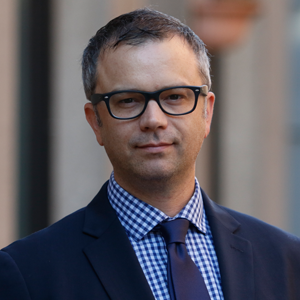
James Wright
Editorial Manager
Global Aquaculture Alliance
Portsmouth, NH, USA[103,114,111,46,101,99,110,97,105,108,108,97,97,103,64,116,104,103,105,114,119,46,115,101,109,97,106]
Related Posts
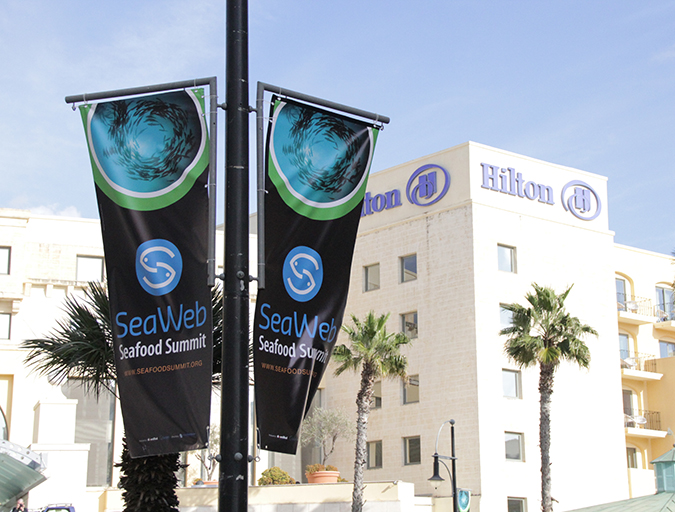
Responsibility
GSSI furthers its mission of clarity out of confusion
The Global Sustainable Seafood Initiative aims to set the bar for certification schemes. Board members of the task force formed in 2012 convened at the SeaWeb Seafood Summit in Malta to reinforce the mission and brief attendees on progress.
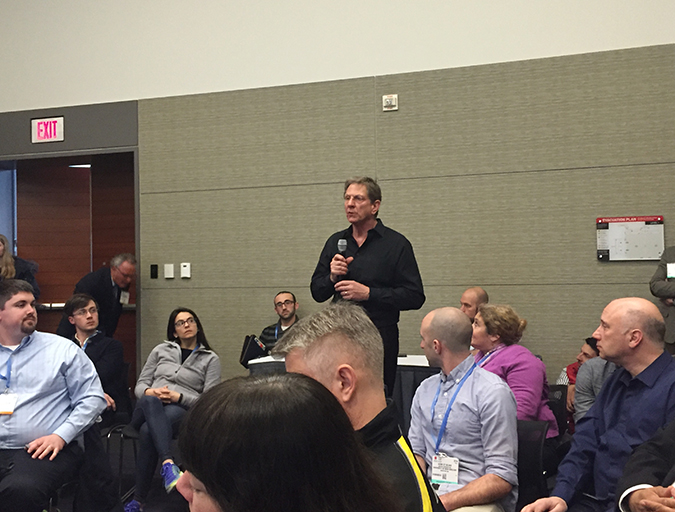
Intelligence
Boston brainstorm: Getting consumers to embrace aquaculture
In a discussion format somewhat unique to the bustling halls of Seafood Expo North America, aquaculture backers lamented the lackluster U.S. consumer acceptance for farmed fish.
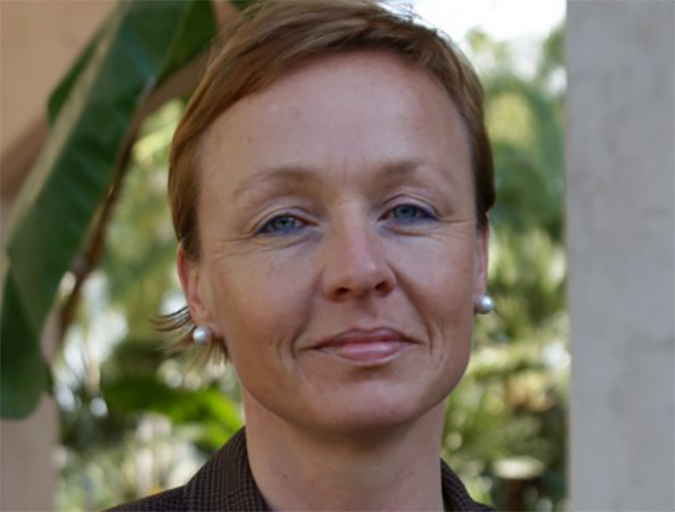
Innovation & Investment
Aquaculture Exchange: Melanie Siggs, part 1
Always seeking to understand the role of business and politics in stewarding the environment, Melanie Siggs has high aspirations for the global seafood industry and its future in helping to feed the world. The independent advisor talks to the Advocate about what makes aquaculture investible, the importance of strategic thinking and the role of NGOs.
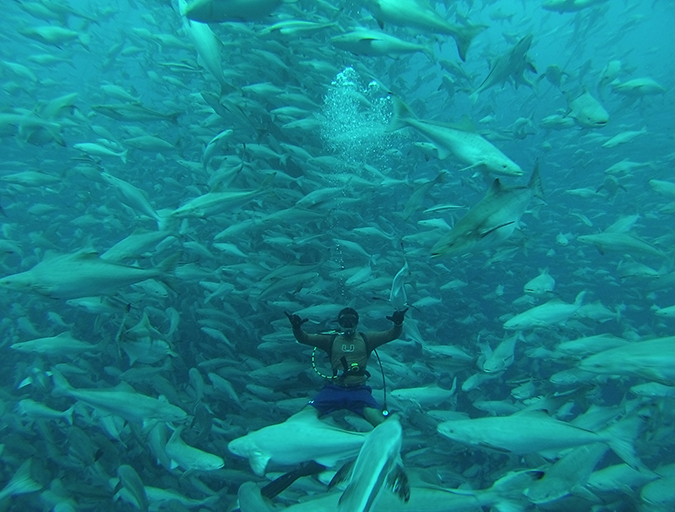
Innovation & Investment
Aquaculture Exchange: Daniel Benetti
University of Miami professor says the U.S. seafood marketplace needs to embrace 'plate-sized' fish if a domestic aquaculture industry is to become sustainable and profitable.


